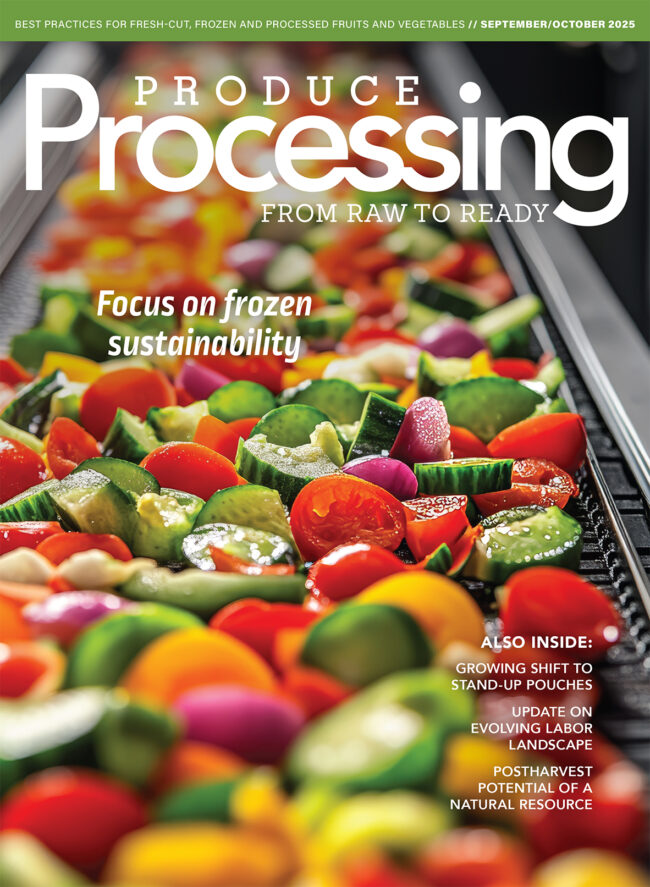Spray solution aims to provide safer travels
A pair of public health crises spurred two transportation industry veterans and startup company co-founders to take action aimed at making the produce supply chain safer.
In 2006, more than 170 people were sickened by E. coli-tainted spinach traced to California’s Salinas Valley. Five years later, in 2011, 147 were sickened by a Listeria monocytogenes outbreak traced to cantaloupes from a Colorado farm, with 33 outbreak-associated deaths reported to the Centers for Disease Control and Prevention.
Those incidents led Tom Madden, president of SaniSafe Transportation Solutions, and Mark O’Reilly, managing partner at chemical formulating and manufacturing company BioSyn, to put their heads together. The two men co-founded SaniSafe, where O’Reilly serves as director of operations, in 2017.
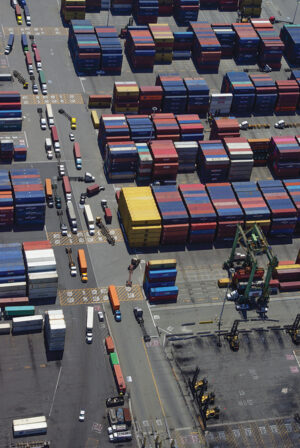
The company’s genesis was work the pair did swabbing transportation containers in Salinas after the E. Coli outbreak.
“We could tell that yes, there is bacteria growth on the interior surfaces of these containers — refrigerated and dry,” O’Reilly said.
Their hunch — and their motivation to find a solution— was reinforced when Sweet Rocky Ford cantaloupes shipped from Colorado in 2011 led to a listeria outbreak in at least 24 states.
The result of their efforts is SaniSafe’s Sanitary Transportation Antimicrobial Treatment System (STAT), an EPA-registered solution specifically formulated for foodborne pathogens and applied with electrostatic spray equipment.
STAT completely covers interior surfaces while reducing standing water that can breed bacteria, Madden and O’Reilly said. It also reduces water usage, saves money and can be tracked via an auditing system developed with logistics partner CargoSense.
“You don’t even miss a molecule,” Madden said.
THE SCIENCE OF STAT
Electrostatics is a branch of physics that deals with the phenomena and properties of stationary or slow-moving electric charges. STAT, applied with a regular-looking spray gun, harnesses its power with a secret weapon inside its bulbous nozzle.
“In the hollow inside, it’s an electrostatic field,” O’Reilly said. “When the droplets are forced out through it, each tiny little droplet (grabs) a negative charge as they’re pushed out from the nozzle. Not only do they scatter because they’re all negatively charged, they also look for a surface to attach to.
“It’s the same system used to paint cars. They put a negative charge on the metal and then they’ll have a positive charge on the paint, and then when they spray it, it just gets a nice, even coating.”
The charges are about 40 to 60 microns in size, O’Reilly said. Micron is a term representing a unit of measure in the metric system equal to 1 millionth of a meter in length (about 39 millionths of an inch).
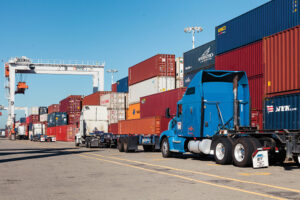
STAT’s proprietary Dry Clean process uses less than one quart of sanitizing liquid per treatment for a 53-foot refrigerated container. Using less water reduces costs while eliminating runoff and resulting reclamation issues as well as volatile organic compounds.
“We’re able to get into those nooks and crannies on the surface, and at the same time not over-douse the surface itself,” O’Reilly said. “You don’t want that either. You just want to be able to get in so that the solution can do its job, and the electrostatics do that better than any other system available.”
The Dry Clean system is not actually dry, O’Reilly said, but delivers STAT using air instead of water.
“(The solution) hits the surface and you can see it glistening on the surface for a few seconds, and then it dries,” he said. “The water comes off of it, but the solid material that does the killing of the pathogens, that stays on, and then that goes to work. You don’t have any dripping or run-off. (STAT) gets sprayed on and stays on to kill.”
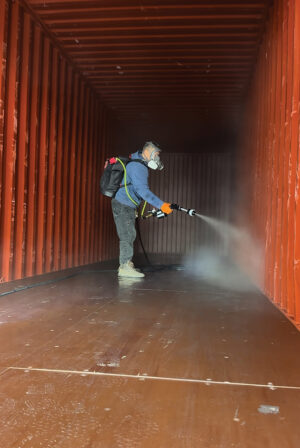
STAT kills COVID, Madden noted, which helped keep SaniSafe afloat during the pandemic, as the company cleaned churches, schools and restaurants while waiting for the transportation industry to get back on the road.
Madden has also owned Mode Transportation since 2014 and was previously vice president of ReTrans Inc. from 2005-2013. O’Reilly also co-founded and served as CEO of SPRAYTRAQ Inc., an operating company formed to help the transportation industry provide food-grade containers.
THE ROAD AHEAD
Having weathered the COVID storm, SaniSafe is now re-launching STAT. That process includes focusing on ports, in areas such as Oakland and Miami, to help broaden the system’s protection possibilities and savings potential.
“You also save the trucking company money with our process,” Madden said. “Right now, if a trucking company picks up a load of asparagus, the driver has to drive to a truck wash. And he waits in line. He finally gets in there, and they sweep it out first, then they go in — if they’re doing it properly — and use some type of antimicrobial soap (to) spray it down and wash it down. Then they go in after that with fresh water and wash the whole thing out.”
Then the container has to dry — a process that can take hours, Madden said, especially in conditions such as the dense fog common in California’s Central Valley during the winter. If a truck driver makes $100 an hour on the road, “you see how the money starts adding up,” Madden said. “With our product, it’s sprayed and he’s ready to go in there and start loading.”
Once a container is sprayed, a QR code is activated. When the trailer reaches its destination, a loading dock manager can scan the code and glean the sanitation history of the container.
“We can go all the way down the supply chain, right to the retailer,” O’Reilly said. “In fact, we have some thoughts about doing this beyond that, to the customer level, but that’s down the road a little bit.”
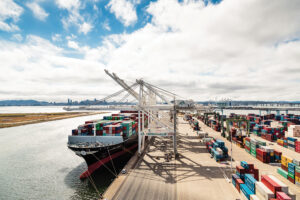
SaniSafe is currently in discussions with potential clients including those in the nut and dry food industries, O’Reilly said, as well as port officials.
“Any time you load a container of dry product, it absorbs orders,” Madden said. “It can retain odor from previous loads. Ninety-nine percent of those odors are bacterial, so we eliminate that.”
SaniSafe, based in Denton, Texas, is also seeking investments to help spread the word about its product and finance on-site demonstrations. Madden said the company is currently talking with private entities involved in transportation.
“We really need to get in touch with — not only the people on the West Coast with the nuts and the dry food, but this especially does well with produce,” he said. “All those people need to be contacted personally and shown how this goes.”
STAT also includes a training process for end users or locations, such as ports, where the system will be used.
“In terms of getting a company up and running and getting them using it, it’s an afternoon, basically,” O’Reilly said. “It’s an hour and a half of training and going through the tracking system and making sure they get that right, so it’s easily scalable.”
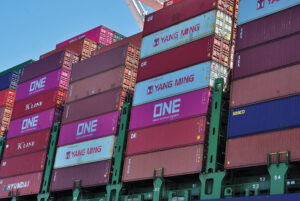
Standard application cost is $95, with minimums and volume discounts. Containers with more in-depth issues are handled on a case-by-case basis.
“If it’s damp in there, this bacteria will grow back quickly. Some bacteria can double in quantity in 20 minutes,” O’Reilly said. “You can imagine how quickly something like that can spread in an hour. Our philosophy is: Keep the water out of the truck as much as possible.
“That’s really our goal, is to make sure these containers are clean when they’re being loaded.”









